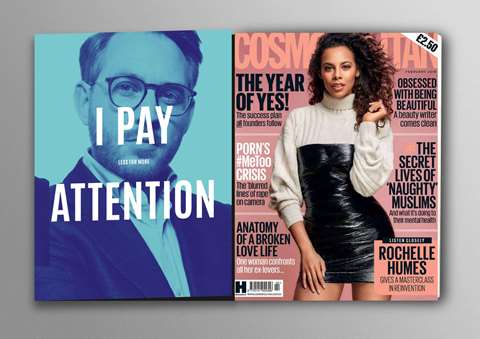Does there need to be a distinction drawn between quality and interruptive attention?
I think so. Quality attention is linked to intentions and goals, and is often connected to the completion of projects or long-term pursuits. Think learning how to play an instrument or reducing your carbon footprint. Interruptive attention, meanwhile, actively distracts from these same projects and pursuits.
In marketing, attention grabbing strategies negatively impact the consumer’s ability to attain their own goals, be they spending time with family or losing weight. Interruptions negatively affect productivity and wellbeing, hindering us from doing what we want to do or becoming who we want to be.
Clearly then, not all attention is positive for advertisers and agencies. And indeed some forms of attention actively detract from the desired outcome.
Why are we seeing so many of these “interruptions” in advertising?
I think changes have been brought about largely on the back of what programmatic advertising and all that algorithms make visible.
These algorithms promise precise targeting without wastage, and the ability to quickly adapt messages to suit individual needs. But the production and dissemination of advertising is driven by measures like engagement and approvals, which concentrate advertiser and agency efforts on ‘likes’, ‘click throughs’, sharing, etc.
Why is focusing on these metrics problematic?
In the current media landscape, marketers all-too-often assume that something is important only if it can be measured.
We’re also seeing a fetishism of metrics like engagement, which are, frankly, a blunt instrument to infer whether a campaign has been successful or no. For one, they fail to account for the meaning attributed to a ‘like’ or ‘share’ – that is the importance a person attributes to that action. Or how this ‘like’ fits into, or is an expression, of broader life goals.
Coca Cola made this mistake when they assumed consumers craved interactions with them based on the millions of ‘likes’ they accrued on Facebook. This and yet they failed to attract consumers to their Coca Cola Journey website. In fact, it never made it into the top 10,000 websites.
Pepsi has also generated high levels of engagement for campaigns and witnessed a drop in sales. While more recently, Proctor and Gamble slashed $200m in digital ad spend and reported an increase in reach.
Do you expect many more brands to adapt their behaviour?
Many brands are now reappraising the value of print and other legacy media in light of new information on the effectiveness – real and perceived – of traditional channels.
Studies conducted by Lumen, who use mounted eye tracking devices to detect actual attention, have found that only 12% of people actually look at online ads - let alone interact with them in a meaningful way. Of the digital display ads that were seen, only 9% were seen for more than one second.
In our study with PHD and Magnetic, we found that better quality attention is attributable to non-digital media like cinema, magazines and newspapers, for example. We also found that because these channels are actively sought after, they are less prone to avoidance or divided attention.
Our research is still ongoing, so further work is needed to understand how these assessments are made and experienced. But with our students at Bournemouth University we are focused on the importance of context in attention.
Context, we think, can apply both to media, but also to a consumer’s state of mind. So we’re considering how different dimensions of context can help us arrive at a more complete understanding of attention, and how it can be cultivated or developed over time.
You mention in the research that ad clutter, distrust, media proliferation and multitasking have corroded the value of advertising. Why is that?
I was referring to some of the work carried out by Thales S. Teixeira from the Harvard Business school. Using studies published between 2000 and 2009 he compared ad skipping rates across different population groups to ads and brands and noted a sharp decline in attention to advertising.
In explaining this drop he suggested ad clutter, distrust, media proliferation and multitasking might be responsible, but added that we as consumers need no longer pay attention to advertising as a source of information or even entertainment anymore, now much of it can be bypassed via the internet.
Douglas Holt suggests that brands – sometimes with multimillion pound marketing budgets – struggle to compete with cultural innovators like PewDiePie, who have been tremendously successful in generating creative entertainment that people actually seek.
How should advertisers and agencies respond?
Teixeira suggests that we return to strategic planning with a more careful mix of media based on strategic intent.
Advertising must deliver higher quality content that is not media biased. And attention must be ‘won’ and ‘cultivated’ over time by addressing and responding to personal goals.
Advertisers should start by understanding the attention potential of each media channel. Some media may provide an environment that fosters more attention; similarly, better content may drive more attention.
As Kevin Kelly (2008), founder of Wired Magazine puts it: “The only way to win customers in the attention economy is to make something worth paying attention to. People don’t respond to facts about how your product will fill a practical need, they respond to stories about how it will fulfil a personal desire.”






